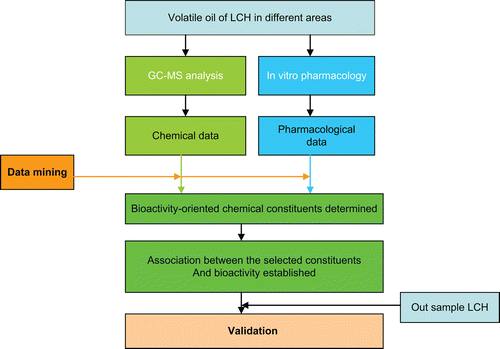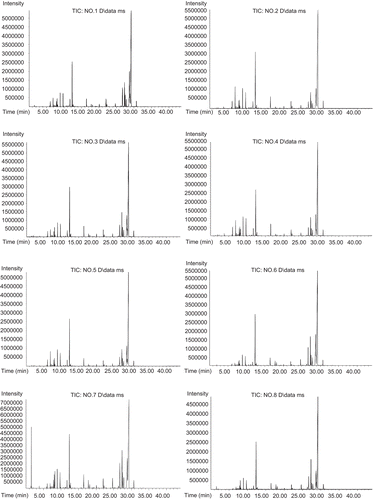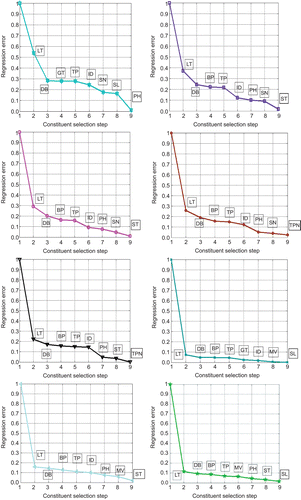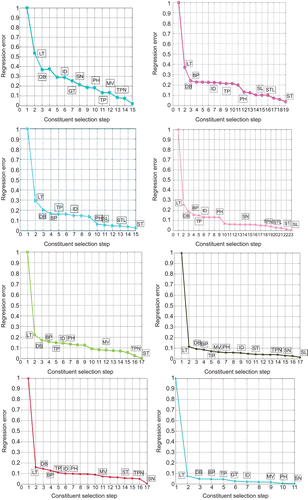Abstract
Context: Chinese herbal medicine (CHM) is a complex multicomponent complex system that interacts with multiple targets and functions via multiple pathways based on the whole human system. Therefore, identification of key constituents of Chinese herbals (CH) not only plays a critical role in the quality control of CHM, but also paves a basis for redevelopment of them.
Objective: Identification of key constituents in volatile oil (VO) of Ligusticum chuanxiong Hort (Umbelliferae) (LCH), which is a CHM clinically used in China thousands of years ago.
Materials and methods: The VO of LCH was pharmacologically demonstrated to have blood vessel activity (BVA) in vitro and chemically investigated by gas chromatography-mass spectrometry (GC-MS) analysis. Data mining approaches were used to bridge the gap between chemical constituents (CCS) and bioactivities as well as contribute to select key constituents of LCH automatically.
Results: Thirteen effective constituents of LCH with significant association with BVA were identified.
Conclusion: The combination of 13 key constituents would accurately predict the bioactivities of blood vessel of LCH. Furthermore, the strategy presented here paves a strong basis for identification of key constituents of CH and elucidation of material basis of CHM.
Introduction
Chinese herbals (CH) were traditionally used by ancient Chinese people to fight with diseases in past thousands of years. To be different from chemical drugs, the combination of CH (the so-called formula) is prescribed in accordance with different diseases, syndromes, and symptoms. It has been gradually accepted that multiple, not single, constituents of CH or formula are involved to exert their bioactivities. However, the complexity of chemical constituents (CCS) in CH hampers elucidation of material basis of them, which significantly affects the safety, activity, and development of CH or formula. Therefore, investigation and establishment of a strategy to identify effective and characteristic CCS in CH is helpful not only to elucidate material basis and inner mechanisms of CH or formula, but also to screen and evaluate new drugs from CH.
The dry rhizome of Ligusticum chuanxiong Hort (Umbelliferae) (LCH) is a typically traditional Chinese medicine and has been used in the clinical treatment for headache, rheumatic arthralgia, and coronary heart diseases in China over hundreds of years (CitationChina Pharmacopoeia Committee, 2010). The volatile compounds in this medicinal plant are considered as an important part for its pharmacological activities (CitationZhang et al., 2007). Many reports have indicated that LCH can induce blood vessel relaxation (BVR) and several CCS have been found to associate with BVR, such as ligustilide (CitationYang et al., 2009) and butylidenephthalide (CitationLiang et al., 2005). However, two research issues are still unclear. One is whether these CCS are specific for LCH. The other is how these constituents interact to induce BVR.
In this article, we presented a novel strategy to screen bioactivity-oriented CCS (). We used gas chromatography-mass spectrometry (GC-MS) to analyze CCS of volatile oil (VO) of LCH and evaluated BVR bioactivity of VO by use of thoracic aorta of rats in vitro. Data mining approaches were integrated into the strategy to bridge the gap between CCS and BVR bioactivity and select key constituents of LCH automatically.
Materials and methods
Samples preparation
The rhizomes of LCH were collected from 10 regions before the flowering state in Sichuan province of China in June 2008. All samples were authenticated by Dr. Fan-Yun Meng (College of Resource Science & Technology, Beijing Normal University) according to the pharmacognostic standard documented in China Pharmacopoeia. Voucher specimens were deposited at the Department of Pharmacology in Institute of Chinese Materia Medica, China Academy of Chinese Medical Sciences. Each dried rhizome of LCH was cut up and weighed 500 g to saturate in 4000 mL water for 12 h. The VO of it was extracted by steam distillation for 8 h, and the resulting VO was stored in −20°C.
Pharmacological experiments
Animals and drugs
Male Sprague-Dawley rats weighing 240 ± 20 g were obtained from the Experimental Animal Center of Peking University Health Science Center. Animal welfare and experimental procedures were carried out according to the guide for the care and use of laboratory animals (National Research Council of the USA, 1996) and related ethical regulations of China Academy of Chinese Medical Sciences.
Dimethyl sulfoxide (DMSO) was purchased from Beijing Chemical Reagents Company. Krebs-Henseleit (K-H) solution (composition, mM: NaCl, 118.96; KCl, 4.73; KH2PO4, 1.17; MgSO4, 1.17; NaHCO3, 25.0; CaCl2, 2.54; glucose, 11.1) and all other reagents were of analytical purity. For the preparation of rat thoracic aorta rings, rats were killed by cervical dislocation and the thoracic aorta was quickly excised and placed into ice-cold Krebs’ solution. The fat and connective tissue were carefully removed from the blood vessel and then it was cut into rings (2–3 mm in length). Each ring was suspended by two L-shaped stainless-steel wires inserted into the lumen, put into a 10-mL organ chambers filled with 5 mL Krebs’ solution, gassed with a mixture of 95% O2 and 5% CO2, and maintained at 37°C. After equilibration under no tension for 30 min, the vessel segments were allowed to equilibrate for 1 h at a resting tension of 1 g. During the equilibration period, the solution was replaced every 20 min. Changes in tension were recorded by isometric transducers connected to a data acquisition system (Shanghai Alcott Biotech Co. Ltd., China) and stored in a computer. Before each formal experiment, the functional integrity of aortic rings was checked by contraction elicited by adding 45 mM KCl. Afterward, the chambers were repeatedly washed out until the resting tone was restored. Vasodilatory effect of VO of LCH was studied by cumulative addition at the concentration from 4.5 × 10−4 to 9.9 × 10−1 g/L every 10 min after the plateau of the KCl-induced contraction.
Statistical analysis
All BVR are expressed as means ± SEM of percentage relaxation of KCl-induced contraction of thoracic aorta ring segments. The blood vessel activity of VO is measured by mathematical equation given as follows:
Where X1 denotes maximal tensility of blood vessel during the experiments, X2 is responsible for the tensility of blood vessel after adding the VO, and const is the basic tensility (const = 1 g in this research).
GC-MS analysis
The VO was analyzed using an Agilent 6890-GC chromatograph (Agilent Technologies, Palo Alto, CA) equipped with a 5973N mass spectrometer and Agilent ChemStation software equipped with HP-5MS (30 m × 0.25 mm × 0.25 μm) capillary column (5% diphenyl, 95% dimethylpolysiloxane; J&W Scientific, Folsom, CA). The temperature of column was increased from 50°C to 90°C at a rate of 10°C/min and then to 280°C at a rate of 4°C/min and held for 7.3 min. Split injection was conducted at a split ratio of 100:1 and high purity of helium was used as carrier gas at a flow rate of 1.0 mL/min. The spectrometers were operated in electron-impact (EI) mode, the scan range was 29–500 amu, the ionization energy was 70 eV, and the scan rate was 0.2 sec per scan. The ionization source temperature and quadruple temperature were 230°C and 150°C, respectively. The injector temperature was 280°C. All the compounds were quantitatively determined by peak area normalization method and identified on the basis of their GC-MS library (Agilent Chemstation software NIST 05 database) and their physical and chemical data.
Data mining approaches
Pearson correlation statistical analysis is used to investigate association of each chemical constituent and BVR as well as its significance. Moreover, regression is one kind of supervised data mining methods and usually employed to establish analytic equations of quantitative variables. By the regression equation, interactions among major constituents of formulae or herbs can be clearly revealed. The goal of data mining here is to establish accurate association between the common constituents and pharmacological activity. The association establishment belongs to supervised category in data mining methods since response variables (pharmacological activity here) are involved during the computation process. Furthermore, both the response variable (BVR) and CCS are continuous variables. Regression methods from supervised data mining methods are most fit to deal with the data here. Least angle regression (LARS) as well as least absolute shrinkage and selection operator (LASSO) are two linear regression methods that have been successfully applied in other research fields (CitationEfron et al., 2004; CitationTibshirani, 1996). The basic idea is to solve the following mathematical expressions.
Where y denotes BVR and x denotes common constituents, and the second expression means that the regression coefficients are bounded.
Results
BVR of VO of LCH in various producing regions
The concentration of each VO was diluted into eight levels. The latter level was 3-fold of the former. shows the detailed average BVR of each VO of LCH in eight levels. BVR monotonously increased with the VO concentration, but the tendency was nonlinear (). Since BVR was induced by CCS of LCH, the nonlinear tendency meant that in different levels of BVR, the interaction of CCS may somewhat variant in different levels of BVR.
Table 1. Blood vessel relaxation (BVR) of nine volatile oils.
GC-MS results of VO in different regions
Fifty-seven common constituents were detected in all included samples, which are listed in . Total ionic chromatographic fingerprints of VO are shown in . They accounted for >92% of each sample. The BVR-oriented constituents would be selected from them and the associations were investigated by data mining methods.
Table 2. Fifty-seven common constituents identified in volatile oil of Ligusticum chuanxiong Hort from nine regions.
Analysis of association between GC-MS and BVR by data mining approaches
Pearson correlation was performed on BVR and CCS in VO of LCH (). By using LARS and LASSO as data mining methods, 13 CCS were discovered from full set to have significant association with BVR ().
Table 3. By using Pearson correlation and P < 0.05, 13 chemical constituents (CCS) were selected to have linear association with bioactivity.
Table 4. The 13 bioactivity-oriented chemical constituents (CCS) were selected by data mining method.
Pearson correlation focused on association between single CCS and BVR. Combination of CCS and its exactly mathematical model with BVR were discovered by advanced data mining methods. LARS and LASSO are both of feature selection methods in data mining approaches. Feature selection methods hypothesized that a subset that is composed of several, not all CCS, is hidden in the data and would be uncovered by them. We used them here to do a comparison study that included the number of CCS selected, regression error, regression coefficients, and so on, and thus we could choose a better data mining method. depicts the order of CCS selected by two mathematical methods. It was found that in whatever concentration and method, LT and DB were selected and their combination could contribute to about 70% accuracy of BVR. The other CCS helped the two CCS to deal with the residual 30% error. LARS and LASSO behaved diversely in selecting other CCS to combine with LT and DB. In most concentrations, BP and TP were subsequently selected. Once TP was selected, the four CCS induced >80% accuracy of BVR. Thus, LT, DB, BP, and TP were fixed BVR-oriented CCS ().
Furthermore, as given in , three CCS patterns could be discovered from data mining process by using LARS, which was validated to present more prediction accuracy than other methods here (see the section “Prediction of BVR”). Eight CCS were selected by LARS on each concentration and the order was given in . For pattern 1 composed of LT and DB, it appeared in every concentration, which suggested that the two CCS were key constituents of LCH to produce BVR. Pattern 2 that composed of four CCS only disappeared in lowest concentration, which might be caused by the mean effect of BVR and the computational error of data mining methods. Pattern 2 appeared for each concentration more than pattern 1, which means that pattern 2 was key constituent of LCH. For pattern 3, containing patterns 1 and 2, was composed of six CCS and appeared in selection process on all concentrations except 0.45 and 990 μg/mL. In many situations, these CCS may play an important role in evaluation of bioactivities. The three patterns discovered present a deep insight into screening bioactivity-oriented CCS of LCH.
Figure 5. The selected 13 chemical constituents keep chemically consistent in different volatile oils of Ligusticum chuanxiong Hort. The chemical characteristics of them are similar. Total concentration accounts for >80% in each volatile oil.
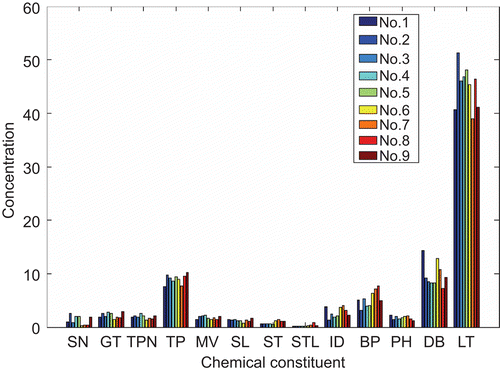
Table 5. By using data mining methods, three patterns can be discovered in the combinations of chemical constituents.
The selected 13 CCS stayed chemically consistent in different VO of LCH and the chemical characteristics of them were also similar. The amount of content of the 13 CCS occupied >80% in total amount of each corresponding VO.
Prediction of BVR
One sample was randomly chosen as test sample to validate the association between CCS and BVR established by the other nine samples. The content of the 13 CCS in test sample and average content of the 13 CCS in the other nine samples were shown in and .The gap between predicted BVR computed by regression method and experimental counterpart was used as an evaluation index not only to demonstrate the association but also to compare two regression methods. By using established mathematical expression by LARS and LASSO (), the gap between predicted BVR estimated by LARS or LASSO and experimental BVR could be computed. As depicted in and , it was found that two methods were able to predict BVR in some concentrations. Whatever regression methods were used, the predicted value may differ from the actual value because of two reasons. One was that the actual value was a mean value due to individual difference. The other was that the association between BVR and CCS assessed by the regression method was a simulation of the actual association. Despite these considerations, regression methods did help us to do two things. One is to choose key CCS from all detected CCS. Furthermore, it similarly established the association between BVR and CCS, from which the interaction of CCS and the roles of CCS could be clearly understood.
Table 6. The content of discovered 13 chemical constituents (CCS) in volatile oil test sample and their average.
Table 7. Regression equations by LARS and LASSO in each concentration.
Table 8. The comparison of two algorithms: LARS and LASSO in predicting activity of Ligusticum chuanxiong Hort.
Figure 6. The content of discovered 13 chemical constituents in volatile oil test sample and their average.
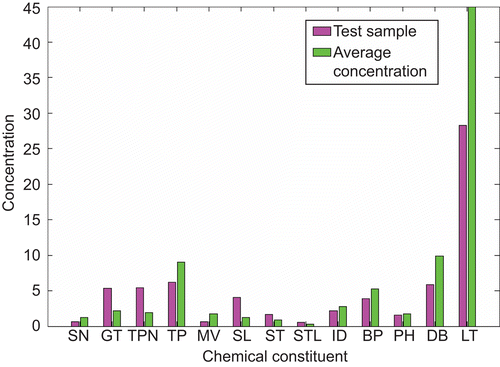
Figure 7. The prediction results given by LARS and LASSO were approximately the same as actual activities.
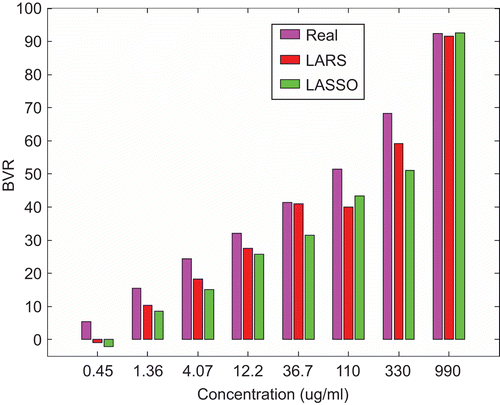
It was noted that the actual activity was mean value of BVR of the test sample, so the small gap between predicted BVR and experimental BVR was allowed. Moreover, the relative error of BVR predicted by LARS and LASSO was 15.79 and 24.06%, respectively, which suggested that LARS performed better than LASSO in establishment of association between CCS and pharmacological activity.
Blood vessel vasodilatation is a major bioactivity of LCH. It has been shown that 13 CCS have significant association with this activity. In different bioactivity regions, some constituents have their distinctive roles. The total content of the 13 constituents covers 80% content in VO of LCH. The association between BVR and CCS accurately predicted the BVR by further investigation, which implied that the strategy presented in the article provided a better solution to screen bioactive components from a complex mixture, such as the VO of TCM.
Declaration of interest
The work was supported by National Basic Research Program of China (“973 Program”) under grant No. 2006CB504700 and Creation for Significant New Drugs Project of China under grant No. 2009ZX09301-005-002. The authors report no conflict of interest. The authors alone are responsible for the content and writing of the paper.
References
- China Pharmacopoeia Committee. (2010). Chinese Pharmacopoeia. China: Chemical Industry Press, Vol. 1, p. 38.
- Efron B, Hastie T, Johnstone I. (2004). Least angle regression. Ann Stat 32:407–451.
- Liang MJ, He LC, Yang GD. (2005). Screening, analysis and in vitro vasodilatation of effective components from Ligusticum chuanxiong. Life Sci 78:128–133.
- Tibshirani R. (1996). Regression shrinkage and selection via the lasso. J R Stat Soc B 58:267–288.
- Yang HJ, ChenJX, Tang SH. (2009). New drug R&D of Traditional Chinese Medicine: role of data mining approaches. J Bio Syst 17:329–347.
- Zhang C, Qi M, Shao Q, Zhou S, Fu R. (2007). Analysis of the volatile compounds in Ligusticum chuanxiong Hort using HS-SPME-GC-MS. J Pharm Biomed Anal 44:464–470.

